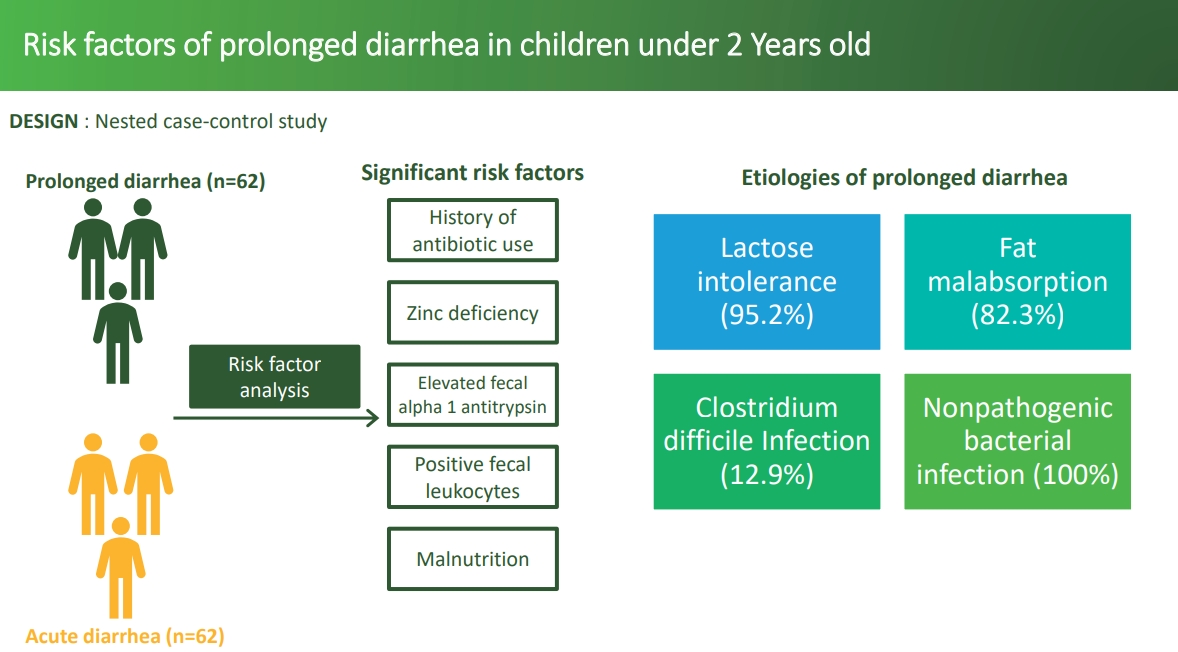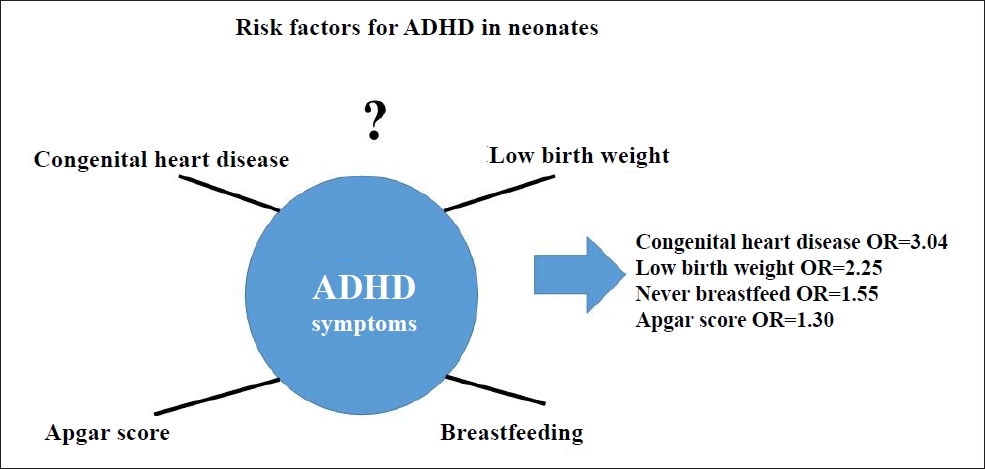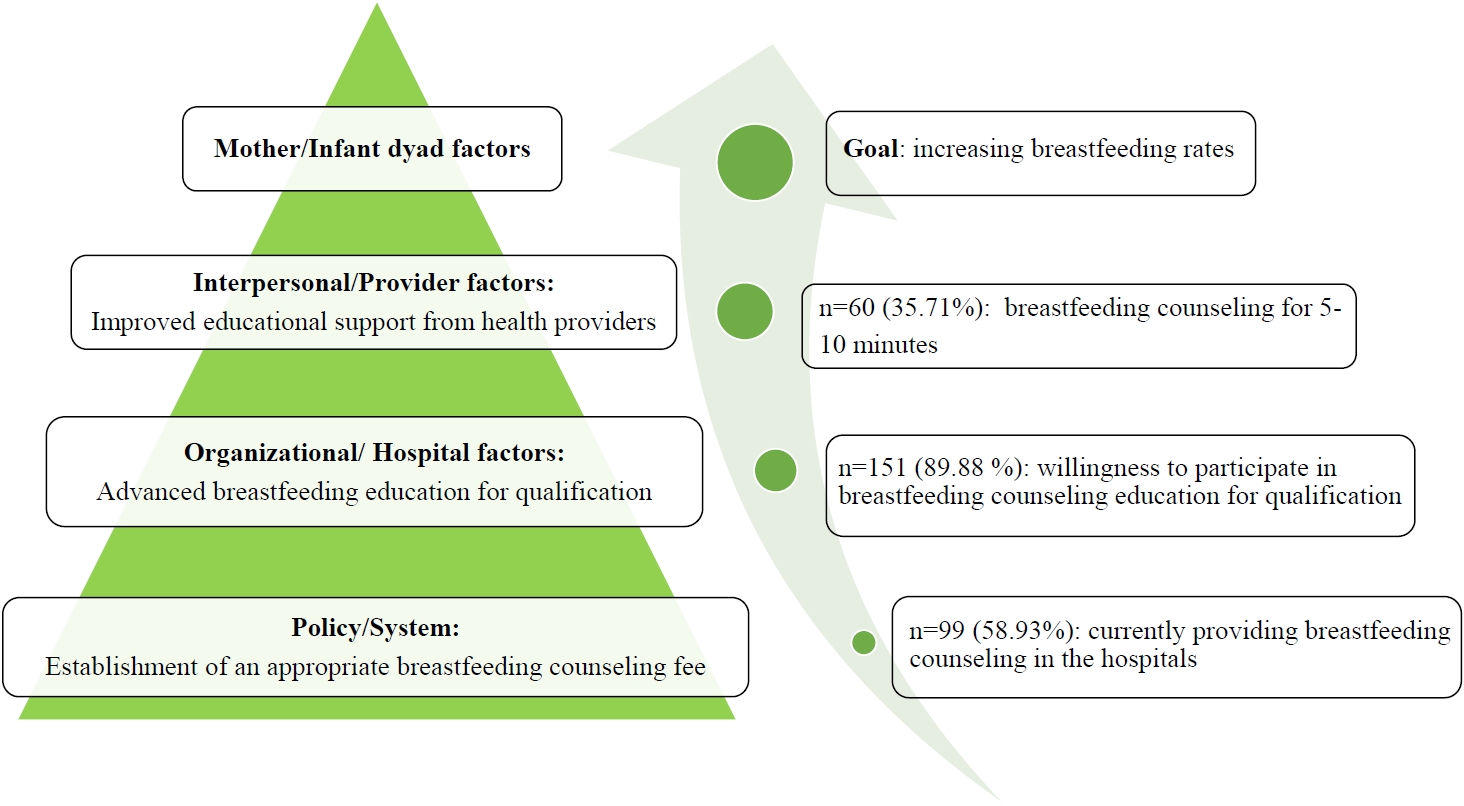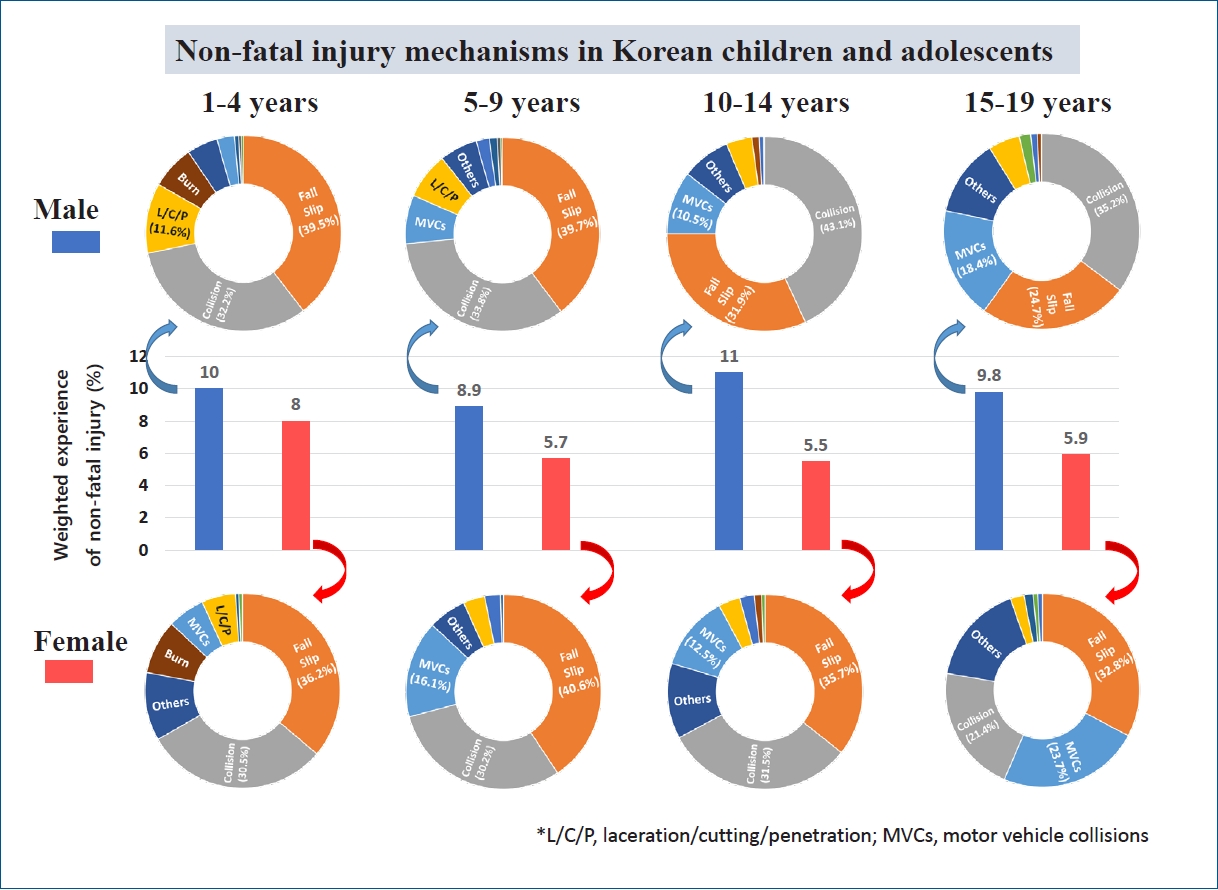Search
- Page Path
-
- HOME
- Search
- Review Article
- Cardiology
- Lifelong impact of elevated blood pressure from childhood to adulthood
- Junhyun Kwon, Eunji Kim
- Clin Exp Pediatr. 2025;68(4):278-286. Published online November 28, 2024
-

· Childhood blood pressure (BP) is significantly associated with adult hypertension and cardiovascular disease.
· Despite ongoing debate regarding the need for regular BP screening and early pharmacotherapy in children, the benefits of optimizing BP throughout childhood are clear.
· Childhood presents a critical window for normalizing BP through lifestyle modifications such as reducing sodium intake and increasing physical activity to promote lifelong cardiovascular health and prevent longterm complications.
- Original Article
- Developmental and Behavioral Medicine
- Neonatal risk factors associated with autism spectrum disorders: an umbrella review
- Amir Mohammad Salehi, Erfan Ayubi, Salman Khazaei, Ensiyeh Jenabi, Saeid Bashirian, Zohreh Salimi
- Clin Exp Pediatr. 2024;67(9):459-464. Published online July 19, 2024
-

Question: What are the neonatal risk factors for autism spectrum disorder (ASD)?
Findings: Significant effect sizes were observed for congenital heart disease (odds ratio [OR], 1.35), macrosomia (OR, 1.11), low birth weight (OR, 1.63), very low birth weight (OR, 2.25), small for gestational age (OR, 1.17), jaundice (OR, 1.74), male sex (OR, 1.47), and Apgar score (OR, 1.40).
Meaning: These factors were identified as risk factors for ASD.
- Gastroenterology
- Risk factors of prolonged diarrhea in children under 2 years old
- Dedy Rahmat, Agus Firmansyah, Ina S. Timan, Saptawati Bardosono, Joedo Prihartono, Pramita Gayatri
- Clin Exp Pediatr. 2023;66(12):538-544. Published online November 16, 2023
-

Question: What are the risk factors for prolonged diarrhea in children under 2 years old?
Finding: History of antibiotic use, zinc deficiency, and elevated fecal alpha-1 antitrypsin levels were the main risk factors of prolonged diarrhea in children under 2 years old with acute diarrhea.
Meaning: Rational antibiotic usage is necessary as well as thorough testing of serum zinc level and fecal alpha-1 antitrypsin levels.
- Developmental and Behavioral Medicine
- Neonatal risk factors associated with attention-deficit/hyperactivity disorder: an umbrella review
- Ensiyeh Jenabi, Erfan Ayubi, Sajjad Farashi, Saeid Bashirian, Fereshteh Mehri
- Clin Exp Pediatr. 2023;66(10):441-446. Published online July 14, 2023
-

Question: The risk factors for attention deficit hyperactivity disorder (ADHD), such as breastfeeding, congenital heart disease, and low birth weight, in neonates are not well understood.
Finding: This umbrella review obtained significant effect sizes for ADHD for congenital heart disease (odds ratio [OR], 3.04), low birth weight (OR, 2.25), never breastfed (OR, 1.55), and Apgar score (OR, 1.30).
Meaning: Congenital heart disease, low birth weight, lack of breastfeeding, and Apgar scores were significant factors for ADHD.
- Nutrition
- Survey of Korean pediatrician’s perceptions of barriers to and improvements in breastfeeding
- Seong Phil Bae, Woo Ryoung Lee, Won-Ho Hahn, Hye-Jung Shin, Young Min Ahn, Son Moon Shin, Yong Joo Kim, Ellen Ai-Rhan Kim, Youn Jeong Shin, Dae Yong Yi, Soon Min Lee, Juyoung Lee, Jin A Lee, Sung-Hoon Chung, Euiseok Jung, Eui Kyung Choi, Ju Sun Heo
- Clin Exp Pediatr. 2022;65(11):540-546. Published online July 29, 2022
-

Question: What barriers to breastfeeding do Korean pediatricians perceive?
Finding: Regardless of medical institution, breastfeeding counseling for parents is currently limited, and breastfeeding is commonly discontinued due to various maternal and neonatal factors.
Meaning: To promote breastfeeding, increasing pediatrician participation in breastfeeding counseling with the establishment of appropriate breastfeeding counseling fees and the expansion of practical and high-quality breastfeeding education for medical staff should be considered.
- Emergency Medicine
- Nonfatal injuries in Korean children and adolescents, 2007–2018
- Gyu Min Yeon, Yoo Rha Hong, Seom Gim Kong
- Clin Exp Pediatr. 2022;65(4):194-200. Published online September 9, 2021
-

Question: How many children and adolescents have experienced nonfatal injuries in the previous year?
Finding: Among Korean children and adolescents, 8.1% experienced at least one injury per year. We found no significant change in the incidence of injuries over the previous 12 years.
Meaning: The incidence of injuries is higher than this estimation; therefore, more attention and effort are needed to prevent injuries among children and adolescents.
- Endocrinology
- Prevalence and associates of obesity and overweight among school-age children in a rural community of Thailand
- Teechaya Nonboonyawat, Wuttipat Pusanasuwannasri, Nattanon Chanrat, Natta Wongthanavimok, Danutanut Tubngern, Piengkwan Panutrakul, Mathirut Mungthin, Thirapa Nivesvivat, Panadda Hatthachote, Ram Rangsin, Phunlerd Piyaraj
- Clin Exp Pediatr. 2019;62(5):179-186. Published online February 8, 2019
-

Purpose: Information about overweight and obesity among students in rural areas of Thailand is limited. Therefore, we aimed to determine overweight and obesity prevalences and associated factors among school-aged children in a rural community of Thailand. Methods: We selected 9 public schools through cluster sampling in 2 provinces located in central Thailand in 2016. Anthropometric measurements were measured using standard techniques,...
- General Pediatrics
- The correlation of depression with Internet use and body image in Korean adolescents
- Chang Hoon Lim, Eun Ji Kim, Jong Hyun Kim, Jue Seong Lee, Yoon Lee, Sang Hee Park
- Clin Exp Pediatr. 2017;60(1):17-23. Published online January 24, 2017
-
Purpose To examine the correlation of depression with Internet use and body image perception, and to analyze the risk factors of depression in a total of 920 students in Seoul, Korea.
Methods Students were recruited by contacting school principals and teachers and were encouraged to fill out a self-report questionnaire designed specifically for this study in July of 2008.
Results Female participants had an increased...
- Gastroenterology
- Risk factors of delayed diagnosis of acute appendicitis in children: for early detection of acute appendicitis
- Jea Yeon Choi, Eell Ryoo, Jeong Hyun Jo, Tchah Hann, Seong Min Kim
- Clin Exp Pediatr. 2016;59(9):368-373. Published online September 21, 2016
-
Purpose This study examined the risk factors of a delayed diagnosis of acute appendicitis in children undergoing an appendectomy.
Methods This retrospective study involved children aged below 18 years, who underwent an appendectomy. After dividing them into a delayed diagnosis group and nondelayed diagnosis group according to the time interval between the initial hospital visit and final diagnosis, the risk factors of delayed...
- Clinical risk factors associated with the development of wheezing in children less than 2 years of age who required hospitalization for viral lower respiratory tract infections
- Joon Hwan Kim, Ji-Yeon Choi, Na Yeon Kim, Jin Woo Kim, Ji Hyeon Baek, Hye Sung Baek, Jung Won Yoon, Hye Mi Jee, Sun Hee Choi, Hyeung Yoon Kim, Ki Eun Kim, Youn Ho Shin, Man Yong Han
- Clin Exp Pediatr. 2015;58(7):245-250. Published online July 22, 2015
-
Purpose Wheezing following viral lower respiratory tract infections (LRTIs) in children <2 years of age is an important risk factor for the development of asthma later in life; however, not all children with viral LRTIs develop wheezing. This study investigated risk factors for the development of wheezing during viral LRTIs requiring hospitalization.
Methods The study included 142 children <2 years of age hospitalized...
- Postnatal weight gain in the first two weeks as a predicting factor of severe retinopathy of prematurity requiring treatment
- Jongmoon Kim, Jang Yong Jin, Sung Shin Kim
- Clin Exp Pediatr. 2015;58(2):52-59. Published online February 28, 2015
-
Purpose This study aimed to investigate the relative weight gain at 2-week intervals up to 6 weeks after birth to predict retinopathy of prematurity (ROP) requiring treatment among very low birth weight infants.
Methods A total of 211 preterm infants with birth weights <1,500 g and gestational age <32 weeks were retrospectively reviewed. The main outcome was the development of ROP requiring treatment....
- Cardiovascular risk factors of early atherosclerosis in school-aged children after Kawasaki disease
- Hyun Jeong Cho, Soo In Yang, Kyung Hee Kim, Jee Na Kim, Hong Ryang Kil
- Clin Exp Pediatr. 2014;57(5):217-221. Published online May 31, 2014
-
Purpose The aim of this study was to determine whether school-aged children with Kawasaki disease (KD) have an increased risk for early atherosclerosis.
Methods The study included 98 children. The children were divided into the following groups: group A (n=19), KD with coronary arterial lesions that persisted or regressed; group B (n=49), KD without coronary arterial lesions; and group C (n=30), healthy children....
- Review Article
- Bone mineral density deficits in childhood cancer survivors: Pathophysiology, prevalence, screening, and management
- Min Jae Kang, Jung Sub Lim
- Clin Exp Pediatr. 2013;56(2):60-67. Published online February 25, 2013
-
As chemotherapy and other sophisticated treatment strategies evolve and the number of survivors of long-term childhood cancer grows, the long-term complications of treatment and the cancer itself are becoming ever more important. One of the most important but often neglected complications is osteoporosis and increased risk of fracture during and after cancer treatment. Acquisition of optimal peak bone mass and...
- Original Article
- The risk factors and prognosis associated with neonatal pulmonary hemorrhage
- Su Jin Park, Ki Tae Yun, Won Duck Kim, Sang Geel Lee
- Clin Exp Pediatr. 2010;53(4):503-509. Published online April 15, 2010
-
Purpose : Although neonatal pulmonary hemorrhage is rare, it is associated with high mortality. We aimed to evaluate the risk factors associated with pulmonary hemorrhage in preterm infants and to describe the clinical course, including neonatal morbidity, of infants who developed pulmonary hemorrhage. Methods : We performed a retrospective case-control study of 117 newborn infants aged less than 37 gestational weeks admitted... -
- Clinical characteristics and courses of congenital muscular torticollis
- Kyong Eun Choi, Hee Chul Lee, So Young Youn, Jung Mi Chun, Son Moon Shin, Byung Hee Han, Yong Taek Lee
- Clin Exp Pediatr. 2009;52(11):1273-1278. Published online November 15, 2009
-
Purpose : Congenital muscular torticollis (CMT), a common musculoskeletal disorder in infants, is characterized by the rotation and flexion deformity of the neck caused by sternocleidomastoid muscle shortening. We investigated the clinical courses and perinatal risk factors of CMT. Methods : Less than 6-month-old patients (98; M:F = 60:38) diagnosed with CMT between February 2007 and August 2008 were classified... -
- The outcomes of retinopathy of prematurity in relation to duration of low dose oxygen therapy
- Pil Sang Lee, Jae Won Choi, Sang Geel Lee
- Clin Exp Pediatr. 2009;52(1):50-55. Published online January 15, 2009
-
Purpose : This study aimed to determine the influence of low-dose oxygen (FiO2 <25%) therapy through nasal cannulae on the progress and prognosis of retinopathy of prematurity (ROP) as well as methods of preventing ROP. Methods : Our subjects comprised premature infants (gestation period <37 weeks; birth weight <1,750 g) born in Daegu Fatima Hospital between February 1, 2001 and... -
- Infantile risk factors for obesity in preschool children
- Sun Ju Park, Jae Won Moon, Hyun Ji Kim, Min Jung Cho
- Clin Exp Pediatr. 2008;51(8):804-811. Published online August 15, 2008
-
Purpose : Childhood obesity is a problem that places a child at great risk for becoming an obese adult. To prevent obesity, it is important to focus on early life risk factors that may contribute to childhood obesity. The aim of this study is to find obesity-causing infantile risk factors in preschool children. Methods : A total of 223 children aged... -
- Long term prognosis of patients who had a Fontan operation
- Hyun-Jung Kim, Eun-Jung Bae, Jung-Il Noh, Jung-Yun Choi, Yong-Su Yun, Wong-Hwan Kim, Jung-Yeul Lee, Yong-Jin Kim
- Clin Exp Pediatr. 2007;50(1):40-46. Published online January 15, 2007
-
Purpose : This study assessed the long term survival rate and long term complications of patients who had a modified Fontan operation for functionally univentricular cardiac anomaly. Methods : Between June 1986 and December 2000, 302 patients with a functional single ventricle underwent surgical interventions and were followed up until February 2006. The mean follow-up period was 8.3?.3 years (range 3.5-18... -
- Changes of neurodevelopmental outcomes and risk factors of very low birth weight infants below 1,500 g, in the last 10 years
- Se Kyu Lee, Ji Hyun Lee, Sang Geel Lee
- Clin Exp Pediatr. 2006;49(10):1050-1055. Published online October 15, 2006
-
Purpose : As a result of advances in neonatal intensive care and perinatal care, neurodevelopmental outcomes of very low birth weight infant(VLBWIS) is expected to lead to improvement. The aim of this study was to report neurodevelopmental outcomes and risk factors of neurologic impairment of very low birth weight infants during the past 10 years. Method : We performed a retrospective... -
- Prevalence and Risk Factors of Vancomycin-Resistant Enterococci (VRE) Colonization in Neonates
- Hwa Yun Lee, Gi Hwan Kim, Jin Su Choi, Sun Hee Kim, Young Youn Choi, Tai Ju Hwang
- Clin Exp Pediatr. 2005;48(9):946-952. Published online September 15, 2005
-
Purpose : Vancomycin-resistant enterococci(VRE) are now nosocomial pathogens in Korea. But little is known about the prevalence of stool colonization with VRE in neonates in Korea. So we studied the prevalence and risk factors of VRE colonization in the Neonatal Intensive Care Unit(NICU). Methods : From January 2000 to December 2004, the medical records of 294 neonates(127 cases of VRE group... -
- Statistical Analysis of 1,000 Cases of Kawasaki Disease Patients Diagnosed at a Single Institute
- Dae Hwan Hwang, Kyoung Mi Sin, Kyong Min Choi, Jae Young Choi, Jun Hee Sul, Dong Soo Kim
- Clin Exp Pediatr. 2005;48(4):416-424. Published online April 15, 2005
-
Purpose : To find the risk factors associated with coronory artery lesions, non-responsiveness to intravenous immunoglobulin(IVIG) treatment, and recurrences in Kawasaki disease patients. Methods : We retrospectively analyzed 1,000 Kawasaki disease patients who were admitted to Yonsei University Medical Center from September 1990 to December 2003. We compared between responder and non-responder groups to IVIG treatment as well as between relapsed... -
- Risk Factors of Nosocomial Rotavirus Infections in Children
- Sin Ae Park, Sun Hee Yu, Seon Woong Lim, Kyung Dan Choi
- Clin Exp Pediatr. 2005;48(4):395-400. Published online April 15, 2005
-
Purpose :Rotavirus is one of the most important causes of nosocomial infections among children. The aim of this study is to determine the risk of nosocomial rotavirus infections and to evaluate the effectiveness of breast-feeding and probiotics in the prevention of nosocomial rotavirus infections. Methods : This study was carried out on admitted children without diarrhea between March 1, 2003 and... -
- Intrauterine Intraventricular Hemorrhage in Premature Infants
- Hyun-Seung Jin, Kyeng-Ah Park, Hyun-Woo Goo, Jong-Hyun Yoon, Ellen Ai-Rhan Kim, Ki-Soo Kim, Soo-Young Pi
- Clin Exp Pediatr. 2005;48(1):27-33. Published online January 15, 2005
-
Purpose : To determine incidence, characteristics and risk factors associated with intrauterine intraventricular hemorrhage(IU-IVH) among premature infants. Methods : The medical records of infants with intraventricular hemorrhage(IVH) admitted to the neonatal intensive care unit of Asan Medical Center from January 1999 to June 2003 were reviewed retrospectively. Infants whose IVH with cystic change were detected within five days of life were... -
- The Incidence and Risk Factors of Posttraumatic Seizure in Children
- Sue Youn, Mi A Lee, Hwang Min Kim, Byung Ho Cha
- Clin Exp Pediatr. 2004;47(11):1198-1204. Published online November 15, 2004
-
Purpose : The goal of our study was to identify the incidence and clinical, neurophysiological and neuroradiological variables with predictive value for posttraumatic seizure(PTS). Methods : The medical records of 625 children with head traumas under 15-year-old who were admitted to the Wonju Christian Hospital, from January, 1993 to January, 2002 were retrospectively reviewed. Among them, 472 patients were included... -
- Clinical Characteristics and Epidemiologic Study of Infection Due to Extended Spectrum β-Lactamase Producing Organism in a Neonatal Intensive Care Unit
- Nu-Lee Jun, Jae-Woo Im, Hyun-Kyung Park, Mi-Na Kim, Ellen Ai-Rhan Kim, Ki-Soo Kim, Soo-Young Pi
- Clin Exp Pediatr. 2004;47(4):373-379. Published online April 15, 2004
-
Purpose : The extended-spectrum β-lactamase(ESBL) producing organism have emerged to be an important pathogen in neonatal intensive care unit(NICU). This study was conducted to investigate incidence, characteristics and risk factors associated with ESBL organism among newborns in NICU. Methods : The subjects included 98 newborns admitted to NICU at Asan Medical Center between September 1998 to July 2002, from whom... -
- Risk Factors of Nephrocalcinosis in Very Low Birth Weight(VLBW) Infants
- Gyu Hong Shim, Jin A Lee, Yun Jung Shin, Ee Kyung Kim, June Dong Park, Beyong Il Kim, Jung Hwan Choi
- Clin Exp Pediatr. 2004;47(3):275-281. Published online March 15, 2004
-
Purpose : Nephrocalcinosis in very low birth weight(VLBW) infants were known to be caused by a longer duration of furosemide use. However, etiologies, pathogenesis and risk factors remain unclear. Therefore, we examined the incidence and risk factors of nephrocalcinosis in VLBW infants retrospectively. Methods : Inborn babies of birth weights less than 1,500 gm were examined retrospectively. Data were reviewed on... -
- Outcome after Discontinuation of Antiepileptic Drugs in Well Controlled Epileptic Children - Recurrence and Related Risk Factors
- Hyo-Bin Kim, Su Jeong You, Tae-Sung Ko
- Clin Exp Pediatr. 2004;47(1):66-75. Published online January 15, 2004
-
Purpose : There has been no exact criteria established for when to discontinue antiepileptic drugs (AEDs) in epileptic children who had been well controlled for a long period. This study was undertaken to evaluate the recurrence rate and predictive risk factors of relapse after discontinuation of AEDs in epileptic children who had been seizure-free. Methods : We retrospectively studied 294 children... -
- Risk Factors for the First-Year Relapse in Children with Nephrotic Syndrome
- Hye Kyoung Shin, Ji Hee Kim, Kee Hwan Yoo, Young Sook Hong, Joo Won Lee, Soon Kyum Kim
- Clin Exp Pediatr. 2003;46(9):889-892. Published online September 15, 2003
-
Purpose : This study aimed to evaluate risk factors of the first year relapse in children with nephrotic syndrome(NS) without the need for biopsy. Methods : We reviewed, retrospectively, 78 children diagnosed with steroid responsive nephrotic syndrome between July 1997 and June 2002. Median years to follow up were 4.4 years(range : 1-5 years). We divided the patients into two groups(group... -
- Colon Perforation during Air Enema Reduction of Intussusception
- Yong Kuk Kim, Hae Ra Im, Gwang Hoon Lee, Soo Jin Han, Yong Han Sun, Eell Ryoo, Kang Ho Cho, Hann Tchah, Hak Soo Lee
- Clin Exp Pediatr. 2003;46(1):37-41. Published online January 15, 2003
-
Purpose : Although air enema reduction has been known as a good method of diagnosis and treatment of intussusception, it could develop colon perforation. However, there have been few studies about this complication. So we analyzed the risk factors of colon perforation during air enema reduction in patients with intussusception. Methods : We reviewed the charts of 12 colon perforation patients... -
- A Follow-Up Study after Discontinuation of Antiepileptic Drug Therapy in Children with Well-Controlled Epilepsy : The Factors that Influence Recurrence
- Sa Jun Chung, Hye Jeon Chung, Young Mi Choi, Eu Hyun Cho
- Clin Exp Pediatr. 2002;45(12):1559-1570. Published online December 15, 2002
-
Purpose : There has been no exact answer to the question of when to discontinue antiepileptic drugs(AEDs) in children with well-controlled epilepsy for a long period. This study is about the risk factors of relapse after withdrawal of AEDs in seizure(Sz)-free patients to show a guideline for discontinuation of AEDs. Methods : One hundred and sixty-nine children were diagnosed as epileptic... -
-

-
-
8.02023CiteScore94th percentilePowered by
-
Impact Factor3.2
-
- TOPICS
- ARTICLE CATEGORY
- Editorial Office
-
Korean Pediatric Society
#1606 Seocho World Officetel, 19 Seoun-ro, Seocho-ku, Seoul 06732, Korea
Tel: +82-2-3473-7306 Fax: +82-2-3473-7307 E-mail: office@e-cep.org
Clinical and Experimental Pediatrics is an open access journal. All articles are distributed under the terms of the Creative Commons Attribution NonCommercial License (http://creativecommons.org/licenses/by-nc/4.0/)
Copyright © 2025 by Korean Pediatric Society.











